7 Delivery Food Trends Every Restaurant Needs to Know
Published on Feb 03, 2022
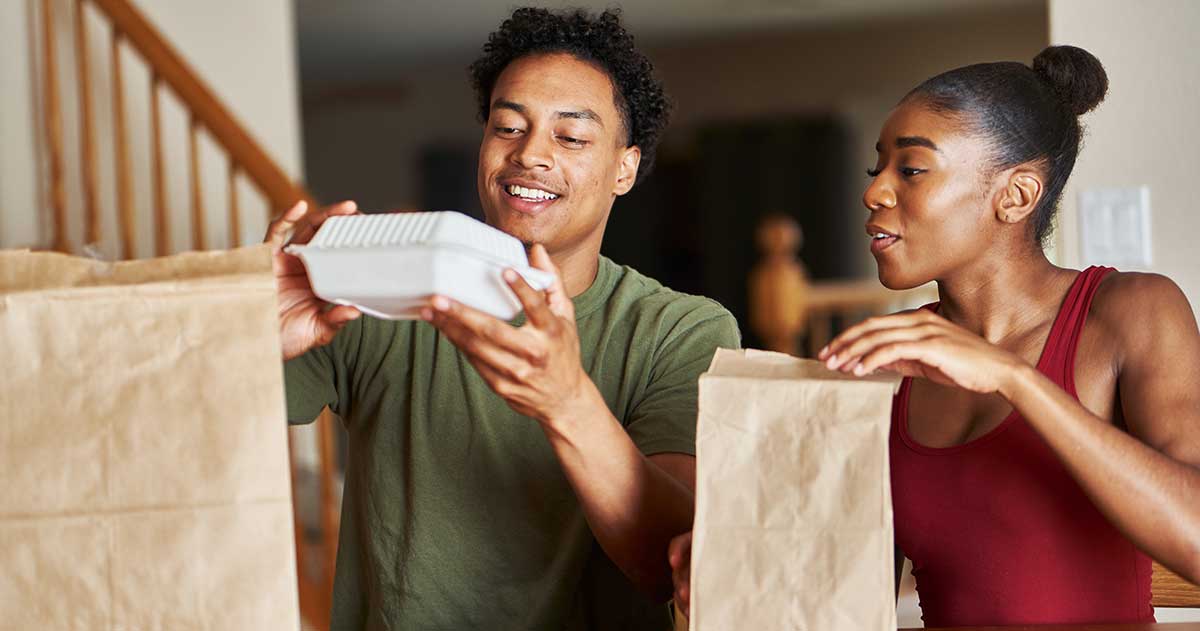
Third-party delivery has become a vital channel for the restaurant industry over the past several years. And though the state of dining rooms continues to be in flux, it’s clear the major third-party delivery food trends brought on by the pandemic are here for the long haul—and delivery will see continued growth.
Forbes has predicted third-party orders will account for 70% of all online food delivery sales in 2022.
The problem is, when it comes to the recent proliferation of delivery models, brands continue to struggle to balance growing demand with basic operational issues like inaccurate orders. In a previous blog, we discussed 3 steps restaurants can take to gain control of the third-party delivery experience. In today’s blog, we’ll explore 7 food delivery trends to help you understand how third-party delivery is impacting your brand and what to consider as you evolve your delivery strategy to keep up with consumer expectations.
Delivery Food Trend #1: Consumers have more delivery options—and all types are seeing significant use
The pandemic has pushed restaurants to launch their own food delivery services at a rapid rate, but third-party delivery continues to be a major presence. U.S. consumers are evenly splitting online ordering between third-party and in-house delivery, while UK consumers are relying more heavily on third-party delivery providers.
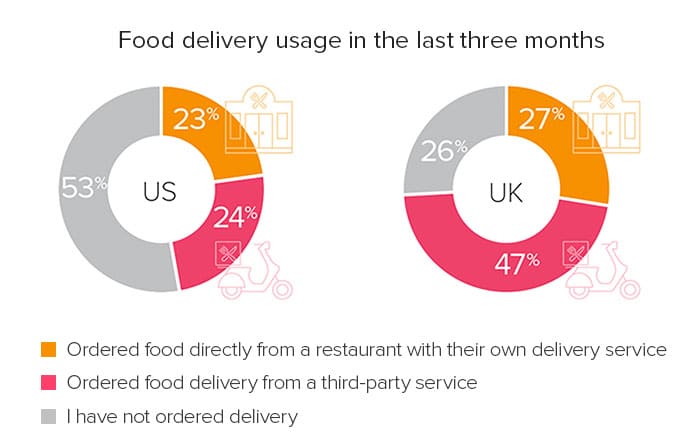
The data is clear: With usage this high, a delivery solution is essential.
It should be noted just over half of consumers are not engaging in restaurant delivery, so there’s a large pool of potential customers out there. Expense is a top reason consumers choose not to use any delivery service, so successful brands will be those that manage to balance convenience, customer experience, and value. To help find that balance, utilizing a customer experience (CX) management program to take care of experience data collection and assist with analysis can be an ideal solution.
Delivery Food Trend #2: The majority of third-party delivery users order from multiple providers
Each delivery app is unique, with different interfaces, delivery fees, and special promotions. Most customers aren’t loyal to just one—in fact, more than half use multiple apps. With the space being relatively new and evolving, customers are still testing the waters with different providers.
Do your homework. Have you logged on to the top delivery platforms to see how your brand is represented? Is it available at all? It’s important to understand how your brand appears through the eyes of the user. Having a way to collect and analyze customer experience data can also be a helpful tool in reviewing which of your partnerships are maximizing cost-effectiveness.
You have to weigh your options. If you want to maximize the financial impact of working with a third-party delivery provider, an exclusive partnership may not be the right choice for your brand.
Delivery Food Trend #3: Almost half of users choose an app because it delivers from their favorite restaurant
People may be willing to split their orders across multiple providers, but loyalty to restaurant brands remains a top driver. Even prior to the pandemic, customers preferred more convenient options to dining in restaurants.
Yes, third-party delivery options can hurt your brand and negatively affect business outcomes if you refuse to get in the game. But if you’re telling yourself it’s best to stay out, you have a lot to lose.
Whether it’s member rewards or special offers around popular menu items, the strongest players will have a loyalty strategy that also includes third-party delivery.
Delivery Food Trend #4: DoorDash has become customers’ app of choice across the U.S.
Though satisfaction is ultimately comparable across all third-party providers, and customers use multiple providers, U.S. consumers show a preference to place orders with DoorDash because of its responsiveness, accuracy, speed, and trustworthiness. Meanwhile U.K. customers show a preference for third-party delivery provider Just Eat because it’s consistent, trustworthy, and meets their expectations—it also has far greater coverage than any other provider.
Frequently review your third-party partners to make sure you’re aligned with the providers who are willing to help you succeed by sharing experience data and helping bring your menu to more customers in your key markets.
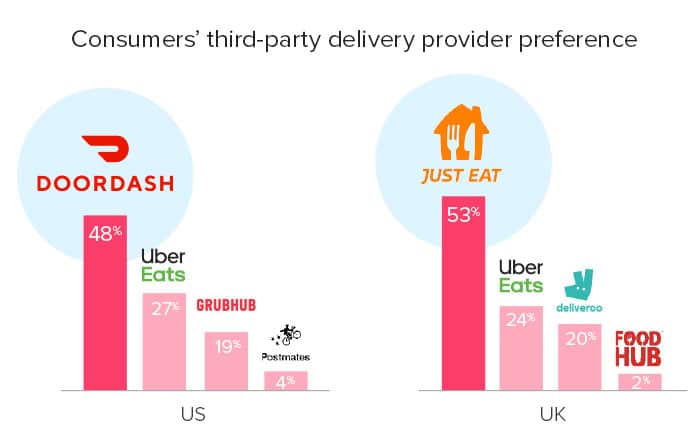
Delivery Food Trend #5: 3 out of 4 customers will take their business elsewhere if your restaurant isn’t available for third-party delivery
In looking at delivery food trends over the past few years, customers have told us if their favorite restaurant wasn’t available on a third-party delivery app, 3 out of 4 would choose a different option rather than seek out other means of dining from their favorite. After all, getting food the customer is craving is the #1 reason customers order from third-party delivery.
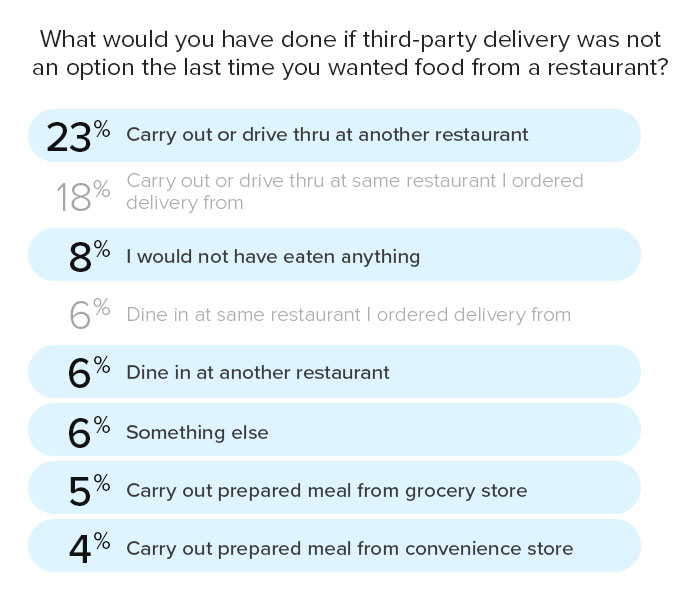
Only 24% of customers will still find a way to choose you over more convenient options, with most of them opting for carryout or visiting your drive-thru instead. Prior to the pandemic, 6% of those most loyal customers who still said they would choose you, even if you weren’t available in their app, would have made the effort to dine in with you.
While playing it safe and staying out of the third-party delivery game may insulate you from some brand hazards, you’re leaving money on the table. The data shows customers crave convenience—and if you’re not offering third-party delivery, you’re competing with it. The best way for you to stay relevant is to provide your customers with more convenient ways that they will utilize to get food. Applying CX management is the perfect match to determine which delivery channels your customers are most likely to use so you don’t waste effort on solutions with little demand.
Delivery Food Trend #6: When consumers have more channels to use for ordering, they order more
For the restaurant industry as a whole, third-party delivery cannibalization is a myth. Instead, it tends to increase business—86% of consumers say third-party delivery services allow them to order food from restaurants more often than they otherwise could. In fact, more than half of U.S. consumers order 4 or more times per month from both the restaurant directly and third-party services.
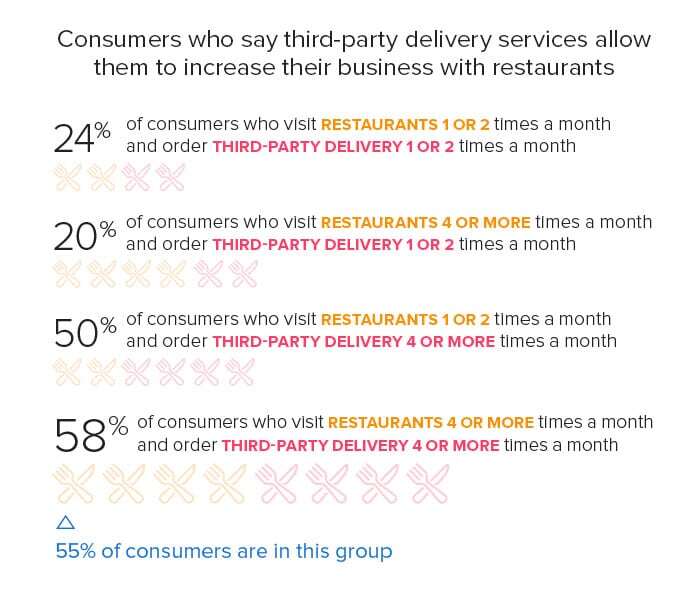
Though these numbers are positive for the industry, cannibalization rates may vary for individual brands. Restaurants must ensure they are able to measure the success of each channel.
The existence of third-party home delivery actually increases your chance diners will patronize your restaurant and generally increases customer demand. By continuing to fine-tune your delivery strategy, you’ll also drive customer loyalty and create the opportunity for experiences that will bring them back.
Delivery Food Trend #7: Problem occurrence is down, but the restaurant still takes most of the risk
Problem occurrence with third-party delivery has dropped significantly in the past few years, with only 26% of customers reporting issues. Unfortunately, at a 54% attribution rate, the biggest challenge is the restaurant is still blamed for any issues almost twice as often as the third-party deliver service—regardless of the issue or actual cause.
Order accuracy still remains a top complaint as well, with the restaurant being perceived as responsible for missing items 27% of the time, despite the fact missing items were reported more frequently when ordering from a third-party service instead of directly from the restaurant.
Do what you can to make sure your customer care teams are equipped with the tools they need to identify and resolve issues unique to the third-party delivery experience.
Protect your brand in the wake of third-party delivery
With the advent of these food delivery trends and the market indicating further adoption and usage rates, it's more critical than ever to ensure your third-party delivery strategy is airtight. Making use of a sound CX strategy can make a significant difference in being able to track the customer satisfaction and overall success with your third-party delivery partnership. If you’re not taking the necessary precautions to safeguard your brand against potential pitfalls, you run the risk of losing control of your customer experience.
For more on other ways your CX investment can grow revenue by improving customer experiences and increasing traffic, take a look our resource, The Ultimate Guide to Experience Management ROI.
Related articles

4 Retail Industry Trends We’ll See in 2022
Many of the retail industry trends that started during the pandemic are here to stay, forcing many to adjust. Here are our predictions.

4 Restaurant Industry Trends We'll See in 2022 and What to Do
Restaurant industry trends took a turn during the pandemic and many changes are here to stay. Here are our predictions for the upcoming year.
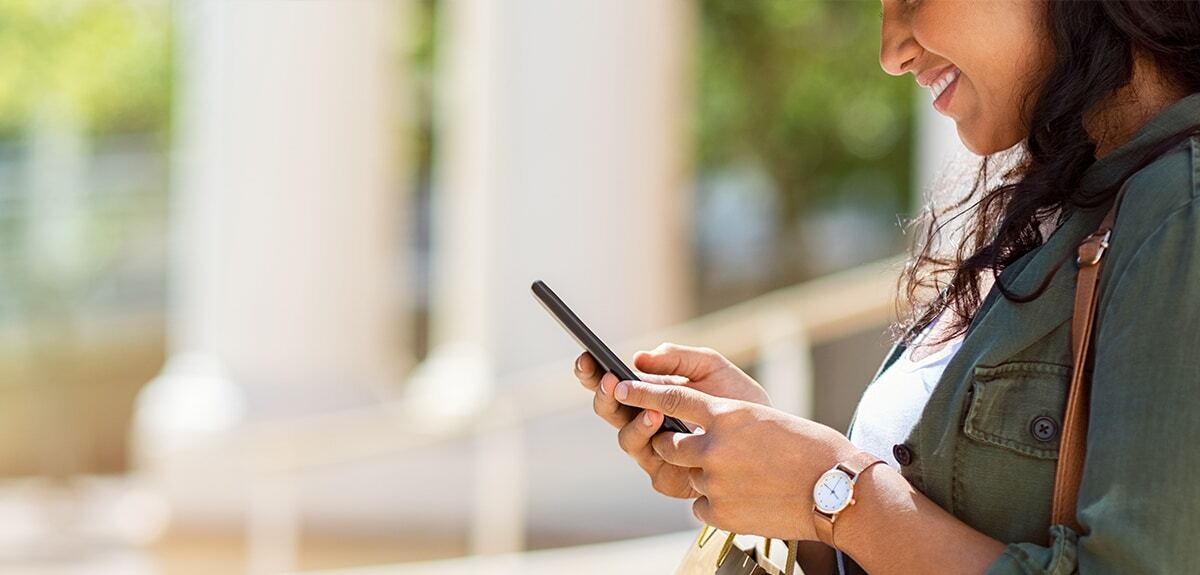
3 Ways to Provide a Convenient + Contactless Customer Experience
Here are 3 ways to capitalize on technology and trends to delight customers with convenient contactless experiences.